Baijinbao: A Journey Through Nature’s Breathtaking Landscapes

An Essential Guide to Visiting Baijinbao_Site
Nestled in the heart of China’s rich historical tapestry, Baijinbao Site (白金宝遗址) beckons intrepid travelers and history enthusiasts alike. This archaeological gem offers a rare glimpse into the ancient civilizations that once flourished in this region, making it a must-visit destination for anyone seeking to deepen their understanding of China’s past.
As you step onto the grounds of Baijinbao, you’ll be greeted by a landscape where time seems to stand still. The remnants of ancient structures whisper tales of a bygone era, inviting you to explore the mysteries hidden within their crumbling walls. With each step, you’ll uncover artifacts that reflect the artistry and craftsmanship of the people who inhabited this area centuries ago.
But Baijinbao is more than just a historical site; it’s an experience that engages all your senses. The vibrant surroundings, coupled with the serene atmosphere, create a perfect backdrop for reflection and exploration. Whether you’re wandering through the ruins, capturing stunning photographs, or simply soaking in the ambiance, Baijinbao Site promises a journey that will leave an indelible mark on your travel memories.
As you plan your visit, prepare to be captivated by stories of ancient civilizations, the beauty of the landscape, and the warm hospitality of the local community. This guide is your essential companion to navigating Baijinbao, ensuring that you make the most of your exploration of this extraordinary site. So pack your curiosity and sense of adventure; an unforgettable journey awaits you at Baijinbao Site!
In This Guide
- An Essential Guide to Visiting Baijinbao_Site
- The Rich History and Legends of Baijinbao_Site
- Main Highlights: What You Absolutely Can’t Miss
- Planning Your Visit: A Practical Guide
- Tickets: Prices, Booking, and Tips
- How to Get There: A Complete Transportation Guide
- Local Cuisine and Accommodation Nearby
- Frequently Asked Questions
- Final Thoughts on Your Trip
The Rich History and Legends of Baijinbao_Site
Nestled in the heart of a region steeped in history, Baijinbao Site (白金宝遗址) is a treasure trove of ancient secrets waiting to be uncovered. This archaeological site offers a fascinating glimpse into the past, tracing the footsteps of those who walked this land centuries ago.
Dating back to the Neolithic period, Baijinbao Site has been an important archaeological find that has provided researchers with invaluable insights into the early human settlements in this area. The site is believed to have been a hub of activity where ancient communities flourished, engaging in agriculture, pottery making, and trade. Excavations have revealed remnants of dwellings, tools, and pottery, illustrating the daily lives and cultural practices of its former inhabitants.
One of the most captivating aspects of Baijinbao is the legends that surround it. Local folklore speaks of mythical creatures and ancient rituals that were said to have taken place in the vicinity. It is believed that the site was not only a practical settlement but also a spiritual one, where the ancients performed ceremonies to honor their deities, ensuring bountiful harvests and protection from calamities. The echoes of these rituals can still be felt today, as visitors often report a palpable sense of tranquility and connection to nature when they walk among the remnants of the past.
In addition to its historical and cultural significance, Baijinbao Site has become a focal point for academic research and tourism. Scholars from around the world flock to this site to study its artifacts and learn more about the Neolithic era in China. Meanwhile, travelers seeking to experience a piece of history find themselves enchanted by the beauty of the landscape, which is punctuated by the remnants of ancient structures and the whisper of the wind through the trees.
As you explore Baijinbao Site, you are not merely walking through ruins; you are stepping into a narrative that weaves together the threads of history, mythology, and human resilience. This site stands as a testament to the enduring legacy of those who came before us, inviting you to ponder the stories that lie beneath your feet and the lives that once filled this land with activity and meaning. Whether you’re a history buff, a casual traveler, or a seeker of legends, Baijinbao offers a unique opportunity to connect with the past, making it a must-visit destination.
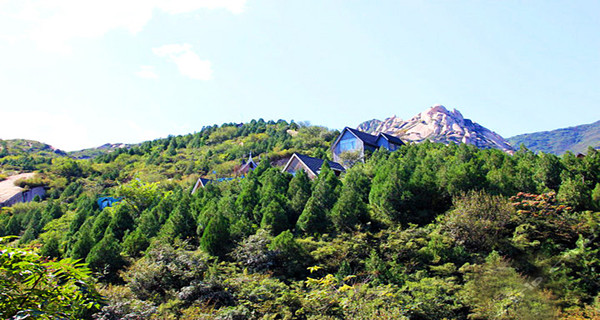
Baijinbao_Site.
Main Highlights: What You Absolutely Can’t Miss
The Baijinbao Site (白金宝遗址) is an archaeological treasure trove that beckons adventurers and history enthusiasts alike. Nestled in the heart of China, this ancient site offers a captivating glimpse into the region’s rich cultural heritage. Here are the key highlights you absolutely cannot miss during your visit:
1. Excavated Relics
One of the main draws of the Baijinbao Site is its extensive collection of excavated artifacts. As you wander through the site, you’ll encounter pottery, tools, and ceremonial objects that date back thousands of years. These relics tell the story of the ancient civilizations that once thrived here, providing insight into their daily lives, rituals, and artistic expressions.
2. Stunning Geological Formations
The natural landscape surrounding the Baijinbao Site is as impressive as its historical significance. The site is characterized by unique geological formations, including dramatic cliffs and intricate rock structures. Take a moment to explore the area, capturing breathtaking photographs and immersing yourself in the stunning vistas that frame this archaeological wonder.
3. Interpretive Center
Don’t miss the on-site interpretive center, which serves as a gateway to understanding the significance of Baijinbao. Whether you’re a history buff or a casual visitor, the informative displays and exhibits will enhance your appreciation for the site. Knowledgeable guides are also available to answer questions and share fascinating stories about the discoveries made at Baijinbao.
4. Walking Trails
For those who enjoy hiking, the trails around Baijinbao offer a perfect opportunity to connect with nature while soaking in the site’s historical ambiance. The well-marked paths lead you through lush vegetation and offer scenic viewpoints overlooking the archaeological areas. It’s a great way to spend a few hours in the great outdoors, all while being surrounded by rich history.
5. Cultural Events
If your visit coincides with local festivals or cultural events, you’re in for a treat! The Baijinbao Site occasionally hosts traditional performances, workshops, and exhibitions that celebrate local culture and history. Engage with local artisans, enjoy traditional music, and participate in hands-on activities that bring the past to life.
6. Photographic Opportunities
Photography enthusiasts will find plenty to capture at Baijinbao. From the intricate details of the artifacts to the sweeping landscapes, every corner of the site offers potential for stunning shots. Early morning or late afternoon light is particularly magical, casting a warm glow over the ruins and the natural surroundings.
7. Local Cuisine
After a day of exploration, be sure to indulge in some local cuisine. The nearby area boasts a range of dining options where you can sample traditional dishes, often made with locally sourced ingredients. Enjoying a meal steeped in the region’s culinary history is the perfect way to round off your visit to this remarkable site.
A visit to the Baijinbao Site is not just an exploration of ancient history; it’s an immersive experience that connects you to the very essence of China’s cultural heritage. Make sure to set aside ample time to appreciate all that this incredible site has to offer!
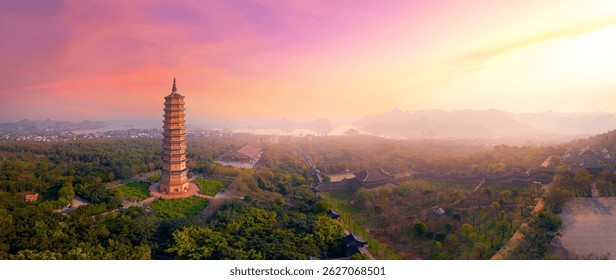
Baijinbao_Site.
Planning Your Visit: A Practical Guide
If you’re planning a visit to the Baijinbao Site (白金宝遗址), you’re in for an enriching experience. Nestled in the heart of China’s historical landscape, this site offers a glimpse into the rich cultural tapestry of the region. Here’s everything you need to know to make your visit seamless and fulfilling.
Getting There
Location: The Baijinbao Site is located in [insert specific province or city], which is well-connected to major urban centers.
Transportation Options:
– By Air: The nearest airport is [insert nearest airport]. From there, you can take a taxi or ride-sharing service to reach the site.
– By Train: If you’re traveling from a nearby city, consider taking a high-speed train to [insert nearest train station]. Trains in China are efficient and comfortable.
– By Bus: Local buses frequently run from [insert nearby transport hubs] to the site. Be sure to check the schedule ahead of your visit.
Best Time to Visit
Seasons: The ideal time to visit Baijinbao Site is during the spring (April to June) and autumn (September to November) when the weather is mild and the natural scenery is at its most vibrant.
Tips: Avoid the peak summer months if you’re not fond of heat, as temperatures can soar.
What to Expect
The Baijinbao Site offers:
– Historical Significance: Explore the remnants of ancient structures and artifacts that tell stories of past civilizations.
– Guided Tours: Consider joining a guided tour for in-depth insights into the site’s history and significance. Local guides are often very knowledgeable and can enhance your experience.
Visitor Information
Entry Fees: Be sure to check the official website or local resources for the latest information on entry fees. Some discounts may be available for students and seniors.
Opening Hours: The site typically opens from [insert opening hours]. It’s advisable to arrive early to avoid crowds and fully experience the site.
Facilities: Visitors can find restrooms, a visitor center, and possibly a café or snack shop. Carrying water and snacks is a good idea, especially if you plan to explore extensively.
Cultural Etiquette
- Respect the Environment: As with any historical site, it’s important to respect the surroundings. Avoid littering and follow designated pathways.
- Photography: While many areas allow photography, be mindful of any restricted zones. Always ask for permission when photographing people.
- Local Customs: Familiarize yourself with basic Mandarin phrases; locals appreciate the effort and it can enhance your interactions.
Accommodation
If you plan to spend the night nearby, consider booking a hotel in [insert nearest town or city]. Options range from budget hostels to more luxurious stays. Make reservations in advance, especially during peak tourist seasons.
Dining Options
While dining near the Baijinbao Site, try local delicacies. Look for nearby restaurants or street food vendors to get a taste of traditional cuisine.
Safety Tips
- Stay Hydrated: Carry water, especially during warmer months.
- Follow Local Guidelines: Pay attention to any signs or instructions from site staff regarding safety and conduct.
Final Thoughts
A visit to the Baijinbao Site promises to be a memorable journey through history. With careful planning and an open mind, you’ll not only explore the site’s rich past but also connect with the present-day culture of the region. Enjoy your travels!
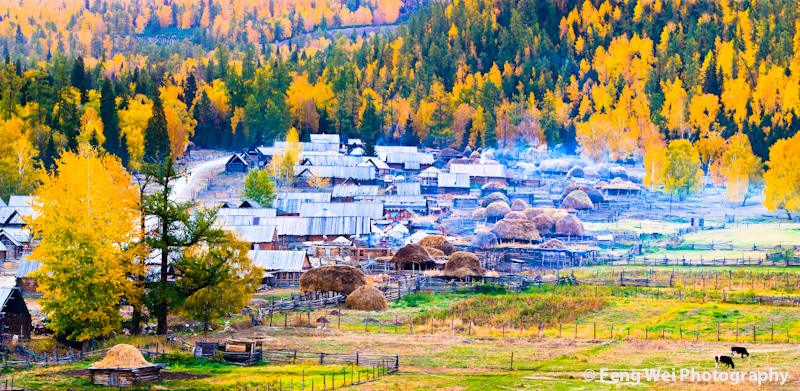
Baijinbao_Site.
Tickets: Prices, Booking, and Tips
When planning your visit to the Baijinbao Site (白金宝遗址), it’s essential to have a clear understanding of the ticketing process to ensure a smooth experience. Here’s everything you need to know about ticket prices, booking, and some helpful tips to enhance your visit.
Ticket Prices
As of now, the entry fee for the Baijinbao Site is approximately ¥30 (around $4.50 USD) for adults. Discounts may be available for children, students, and seniors, so it’s worth checking at the ticket counter if you fall into one of these categories.
Booking Tickets
Tickets can typically be purchased at the entrance of the site. However, to avoid long queues, especially during peak tourist seasons, consider booking your tickets in advance through official tourism websites or local travel agencies. Some online platforms may offer the convenience of e-tickets, which you can simply scan from your mobile device upon arrival.
Tips for Your Visit
-
Timing Your Visit: The Baijinbao Site can get crowded, particularly on weekends and public holidays. Aim to visit early in the morning or later in the afternoon for a more serene experience.
-
Guided Tours: While exploring the site on your own is enjoyable, joining a guided tour can provide deeper insights into the historical significance and archaeological details that you might miss otherwise.
-
Prepare for the Weather: Depending on the time of year, be sure to check the weather forecast. Bring sun protection or rain gear as needed. Comfortable walking shoes are a must, as you’ll want to explore the site thoroughly.
-
Local Transportation: Familiarize yourself with local transportation options to reach Baijinbao Site. Public buses or taxis are generally accessible, but using a ride-hailing app can simplify your journey.
-
Cultural Etiquette: Respect the site’s rules and regulations. Avoid touching artifacts and follow any guidelines provided by staff to help preserve this historical treasure.
-
Stay Connected: Download a translation app or carry a phrasebook to help with any language barriers. This can enhance your interaction with local vendors and other visitors.
By planning ahead and keeping these tips in mind, your visit to the Baijinbao Site is sure to be an enriching experience that immerses you in the rich history of this remarkable location. Enjoy your journey into the past!
How to Get There: A Complete Transportation Guide
Reaching the Baijinbao Site (白金宝遗址) is an adventure that offers a glimpse into the ancient history of China. Nestled in the scenic landscapes of the country, this archaeological site is accessible through various transportation options designed to suit every type of traveler. Whether you prefer the speed of high-speed trains, the convenience of domestic flights, or the local charm of road travel, here’s how you can get to Baijinbao Site with ease.
By Air
If you’re coming from afar, flying into a major city like Beijing or Xi’an is the most practical choice. Both cities have international airports with numerous flight options.
- Fly to Xi’an Xianyang International Airport (XIY):
- This is the closest major airport to Baijinbao Site.
-
Once you arrive, you can take a taxi or book a ride through a ride-hailing app like Didi to reach the site.
-
Fly to Beijing Capital International Airport (PEK):
- If you land here, you can take a high-speed train or a domestic flight to Xi’an.
- From Xi’an, follow the above-mentioned transportation options to Baijinbao Site.
By Train
China’s extensive high-speed rail network is a fantastic way to travel, offering comfort and efficiency.
- From Beijing to Xi’an:
- Take the G-series high-speed train from Beijing West Railway Station to Xi’an North Railway Station. The journey takes around 5-6 hours.
-
Once at Xi’an North, you can take a taxi or bus to Baijinbao Site.
-
From Xi’an to Baijinbao Site:
- Depending on your arrival time, local buses may be available, or taxis can be hired for a more direct route.
By Bus
For those who enjoy scenic routes, traveling by bus can offer a unique perspective of the landscape.
- Long-Distance Buses:
- Buses from various cities to Xi’an are readily available. You can check schedules at the local bus station or online.
- Upon arriving in Xi’an, utilize local buses or taxis to reach Baijinbao Site.
Local Transportation Options
Once you’re in Xi’an, navigating to Baijinbao Site can be done through:
- Taxi or Ride-Hailing Apps:
-
Taxis are abundant, and using apps like Didi can make your journey convenient, especially if you don’t speak Mandarin.
-
Public Buses:
-
If you’re feeling adventurous and want to experience local life, consider taking a public bus. Check local transit maps for routes heading towards Baijinbao.
-
Car Rentals:
- For travelers who prefer driving, renting a car is an option. Just ensure you have a valid China driver’s license and familiarize yourself with local driving laws.
Tips for Travelers
- Language: While many transportation options are straightforward, having a translation app like Pleco or WeChat can be helpful.
- Connectivity: Consider getting a local eSIM or a portable Wi-Fi device to stay connected during your travels.
- Payment Methods: Alipay and WeChat Pay are widely used in China, so having an account set up can simplify transactions, especially for local transport.
With these transportation options at your fingertips, reaching Baijinbao Site is not only feasible but can also be an enjoyable part of your travel experience. Each mode of transportation offers its own charm, allowing you to soak in the diverse landscapes and cultures of China on your journey. Happy travels!
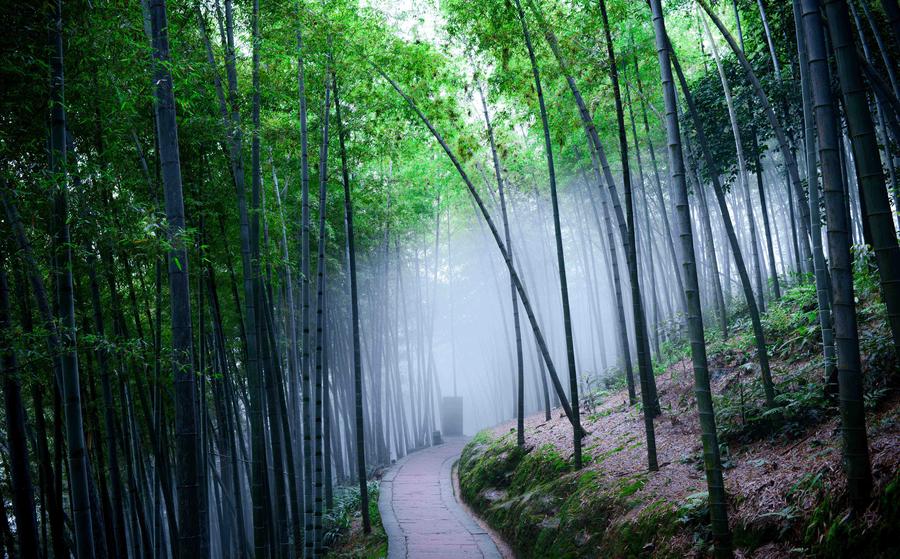
Baijinbao_Site.
Local Cuisine and Accommodation Nearby
When visiting the Baijinbao Site (白金宝遗址), travelers can immerse themselves in both the rich local cuisine and comfortable accommodations that enhance their experience. Here’s a guide to some delightful dining options and nearby places to stay.
Culinary Delights
1. Local Street Food Stalls
One of the best ways to experience authentic Chinese flavors is through street food. Nearby, you’ll find a variety of stalls offering local specialties such as jianbing (savory pancakes), baozi (steamed buns), and chuan (skewered meats). Don’t miss out on trying tanghulu, candied fruit on a stick, which is a popular snack among locals.
2. Baijinbao Restaurant
Located just a short walk from the site, this family-run restaurant offers a cozy atmosphere and a menu filled with regional dishes. Highlights include spicy hot pot and stir-fried seasonal vegetables, showcasing the area’s fresh produce. The friendly staff are more than happy to recommend dishes based on your preferences.
3. Noodle House
For those craving a warm bowl of comfort, the local noodle house serves up hand-pulled noodles in rich broths. Their beef noodle soup is a standout, flavored with aromatic spices and tender meat. Pair it with a side of dumplings for a filling meal.
Comfortable Stays
1. Baijinbao Inn
Just a stone’s throw away from the archaeological site, Baijinbao Inn offers a charming stay with traditional decor and modern amenities. Guests can enjoy spacious rooms with en-suite bathrooms, free Wi-Fi, and a complimentary breakfast featuring local dishes. The staff is known for their warm hospitality, making it a perfect choice for first-time visitors.
2. Local Boutique Hotel
For those looking for a touch of luxury, consider booking a night at a nearby boutique hotel. With stylish rooms, a rooftop terrace, and an on-site restaurant serving fusion cuisine, this hotel balances comfort with a modern aesthetic. It’s an ideal spot for relaxing after a day of exploration.
3. Guesthouse Options
If you prefer a more homely atmosphere, several guesthouses in the area provide a unique experience. These often feature personalized service and the opportunity to engage with local culture. Many guesthouses offer guided tours to the Baijinbao Site and surrounding attractions, enriching your stay with insider knowledge.
Whether you’re indulging in local flavors or resting after a day of discovery, the vicinity of the Baijinbao Site ensures a fulfilling experience for every traveler. Enjoy your culinary and cultural journey!
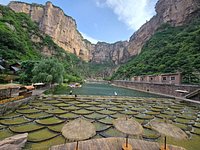
Baijinbao_Site.
Frequently Asked Questions
Frequently Asked Questions about Baijinbao Site (白金宝遗址)
-
What is the Baijinbao Site?
The Baijinbao Site is an ancient archaeological site located in China, notable for its rich history and significant cultural artifacts. It offers visitors a glimpse into China’s past, showcasing remnants from various dynasties and providing insight into ancient lifestyles. -
How do I get to Baijinbao Site?
The site is accessible via several modes of transportation, including local buses, taxis, and personal vehicles. Depending on your starting point, you may need to take a train or bus to the nearest city and then continue by local transport. It’s advisable to check local maps and transport schedules for the most accurate directions. -
Is there an entrance fee?
Yes, there is typically an entrance fee to visit Baijinbao Site. The cost may vary depending on the season and any special exhibitions that may be taking place. It’s best to check the official site or local tourism information for the latest pricing. -
What are the opening hours?
The Baijinbao Site usually operates daily, but opening hours can vary. Generally, it opens in the morning and closes in the late afternoon. To avoid disappointment, confirm the hours before your visit, especially during public holidays or special events. -
Are there guided tours available?
Yes, guided tours are offered at the Baijinbao Site. These tours can enhance your experience by providing detailed historical context and information about the artifacts and structures you’ll encounter. It’s recommended to book in advance, especially during peak tourist seasons. -
What should I wear when visiting?
Comfortable walking shoes are highly recommended, as the site often requires a fair amount of walking. Depending on the season, dress appropriately for the weather, as outdoor areas may be exposed to sun or rain. -
Are there facilities available on-site?
Yes, the Baijinbao Site typically has basic facilities, including restrooms and snack shops. However, options may be limited, so it’s a good idea to bring water and snacks, especially if you plan to spend a significant amount of time exploring. -
Can I take photos at the site?
Photography is generally allowed at the Baijinbao Site, but be mindful of any specific restrictions regarding flash photography or certain exhibits. Respecting the site and following any posted guidelines will ensure a pleasant experience for everyone.
Final Thoughts on Your Trip
As your journey to Baijinbao Site (白金宝遗址) comes to a close, take a moment to reflect on the rich tapestry of history and culture you’ve encountered. This remarkable archaeological site, steeped in ancient significance, offers a unique glimpse into China’s past, showcasing the resilience and ingenuity of civilizations long gone.
Walking through the remnants of this historic area, you have not only traced the footsteps of those who came before but also embraced the essence of exploration that every traveler seeks. The stories embedded in the stones and artifacts whisper tales of a bygone era, inviting you to connect with a world that has shaped the present.
As you prepare to depart, carry with you the memories of your discoveries, the breathtaking landscapes, and the warmth of the local people. Let Baijinbao Site inspire you to seek out more hidden gems, not just in China, but in every corner of the globe. The adventure doesn’t end here; it merely unfolds into new experiences waiting to be embraced. Safe travels, and may your wanderlust continue to guide you on many more journeys ahead!